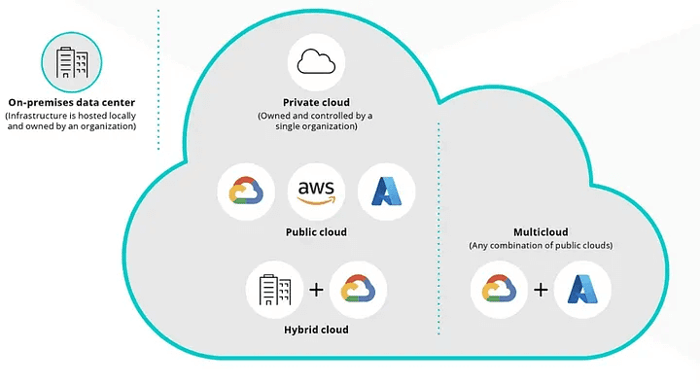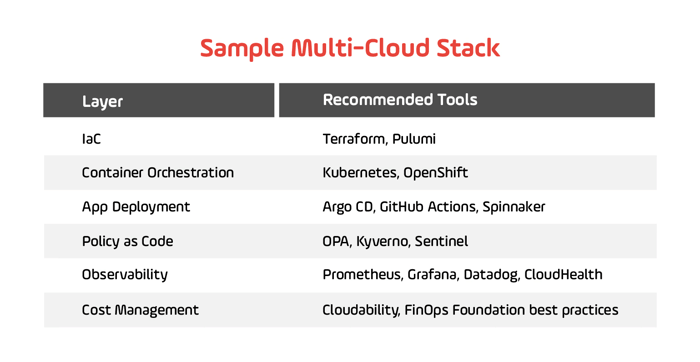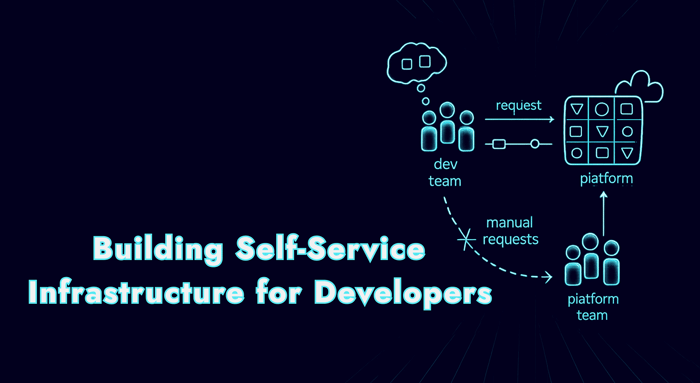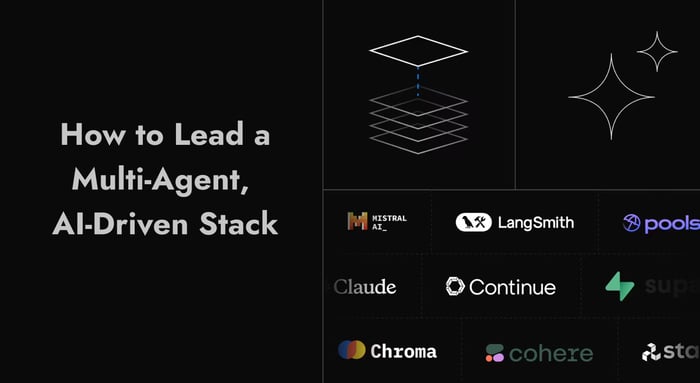Table of Contents
A comprehensive guide to managing, securing, and optimizing workloads across diverse multi-cloud environments.
As we wrap up 2025, it’s clear that cloud adoption is evolving in exciting ways. Companies aren’t just enhancing their technical capabilities; they’re also rethinking how they structure and manage their cloud environments. One notable trend is the growing preference for multi-cloud strategies. Instead of putting all their eggs in one basket with a single cloud provider, organizations are now increasingly opting to use services from multiple vendors.
Several reasons are driving this change. For one, businesses want to avoid vendor lock-in, which allows them more flexibility and control over their choices. They’re also keen to select the best tools available for their specific needs and to fulfil various regulatory or geographical requirements that necessitate a more diverse approach. Recent research from Gartner highlights this trend, revealing that over 92% of large enterprises are now utilizing a multi-cloud setup, with many juggling workloads across three or more providers. It’s an exciting time as companies find ways to harness the strengths of multiple clouds to their advantage!

But with these advantages comes complexity. Each cloud introduces its own operational models, security frameworks, cost structures, and governance requirements. Without careful planning, the promise of flexibility can quickly give way to sprawl, inefficiency, and risk. Organizations are now grappling with challenges such as fragmented tooling, inconsistent compliance enforcement, escalating costs, and skills gaps across teams.
This article explores how enterprises can successfully manage multi-cloud complexity. We’ll break down the frameworks, tools, and cultural practices that enable teams to navigate operational challenges while still realizing the benefits of resilience, flexibility, and innovation.
Key Takeaways
Complexity of management: Unified tooling, automation, and governance frameworks are essential.
Security and compliance: Centralized controls and regular audits reduce fragmented risk.
Cost and skills gaps: Cloud-cost management tools, training, and managed services help keep spending and talent challenges in check.
Multi-cloud is no longer optional for most enterprises; it’s the reality. The real question is how effectively organizations can manage their complexity.
Understanding Multi-Cloud Complexity
A multi-cloud strategy involves using services from two or more public or private cloud providers, such as AWS, Azure, or Google Cloud, to meet diverse business and technical requirements. Unlike earlier phases of cloud adoption, where the focus was on choosing a single vendor, enterprises today seek flexibility, resilience, and best-of-breed capabilities by mixing and matching providers.
It’s important to distinguish between cloud models:
Single Cloud: All workloads run on a single provider, offering simplicity and deep integration but creating high vendor lock-in risk.
Multi-Cloud: Different providers are chosen for different workloads, for example, running AI workloads on GCP while using AWS for compute, avoiding lock-in but increasing complexity.
Hybrid Cloud: A mix of on-premises infrastructure (or private cloud) and public cloud services, often used in regulated industries or for gradual migration.

Typical enterprise scenarios for multi-cloud include distributing workloads to meet regulatory requirements across regions, combining providers to optimize for performance or cost, and enhancing resilience by avoiding reliance on a single vendor.

However, these benefits introduce complexity drivers:
Fragmented tooling: Each cloud offers its own dashboards, APIs, and monitoring systems.
Inconsistent APIs: Differences in how services are provisioned and managed create integration challenges.
Divergent security models: IAM, encryption, and compliance frameworks vary, complicating unified governance.
Multi-cloud unlocks choice and resilience but demands strong architectural discipline to prevent sprawl. Recognizing these trade-offs is the first step toward managing complexity effectively.
Multi-Cloud Architectures
Cloud architecture is no longer static; it evolves alongside market needs, regulatory pressures, and enterprise growth. As organizations seek flexibility, resilience, and freedom from vendor lock-in, many are adopting multi-cloud architectures, where workloads run across two or more public cloud providers such as AWS, Microsoft Azure, or Google Cloud Platform. Instead of placing all workloads into a single environment, enterprises distribute them strategically to optimize for cost, performance, or specialized services.

This model differs from hybrid cloud, which combines public cloud resources with private or on-premises infrastructure in a tightly integrated system. While hybrid cloud emphasizes interoperability across environments, multi-cloud focuses on flexibility, allowing teams to choose the best platform for each workload, even if that means running them independently.
Feature | Multi-Cloud | Hybrid Cloud |
Definition | Using multiple public cloud providers independently for different workloads. | Combining public cloud(s) with private/on-prem infrastructure in an integrated environment. |
Architecture | Decentralized workloads are spread across separate providers. | Integrated workloads spanning public and private resources. |
Primary Goal | Flexibility, vendor independence, best-of-breed services. | Seamless integration and consistent management. |
Use Case Focus | Teams/projects select clouds by need (e.g., AI on GCP, compute on AWS). | Extending data centers with cloud for modernization. |
Management Complexity | Higher, due to fragmented platforms and APIs. | Moderate, with integration challenges but cohesive control. |
Data Movement | Often siloed, limited data sharing across providers. | Frequent data exchange between private and public clouds. |
Core Principles for Multi-Cloud Management
Managing multiple providers effectively requires discipline and consistency. Key principles include:
Abstraction Where Possible: Unified APIs and orchestration layers hide provider-specific differences, reducing operational burden. This makes it easier to deploy workloads across multiple clouds without rewriting code or scripts.
Standardization: Common Infrastructure as Code (IaC) patterns, Terraform modules, and Pulumi templates ensure consistency, reusability, and reduced drift across providers.
Security by Design: Embed compliance and security from the start through Policy-as-Code. Tools like Open Policy Agent (OPA) or HashiCorp Sentinel enforce rules automatically, reducing human error.
Observability and Monitoring: Establish consistent logging, metrics, and tracing across providers to detect issues early and avoid blind spots. Unified observability stacks such as Prometheus, Grafana, or Datadog help normalize signals.
Control Plane Unification: Tools like Google Anthos, Azure Arc, and Crossplane provide a central control plane, simplifying deployment and lifecycle management across heterogeneous environments.
Centralized Policy Management: Beyond security, organizations should centralize governance for identity, cost policies, and compliance to prevent fragmentation.
Multi-Cloud Networking Models: VPNs, dedicated interconnects, and service meshes (e.g., Istio, Linkerd) enable secure, low-latency communication between environments.
Data Layer Strategy: Data replication, sharding, and consistency models are critical. Without a strategy, data silos or latency issues undermine the advantages of multi-cloud.
A well-architected multi-cloud system doesn’t just distribute workloads, it abstracts complexity, enforces consistency, and provides visibility across diverse platforms. Done right, it empowers organizations to balance freedom of choice with disciplined management.
Operational Complexities in Multi-Cloud
While multi-cloud offers flexibility, choice, and resilience, it also introduces significant operational challenges. Managing different cloud platforms means working with varied tools, policies, and service models. Without careful coordination, these differences can lead to inefficiencies, inconsistent security, higher costs, and talent shortages.
The table below summarizes the most common operational complexities:
Operational Complexity | Description |
Diverse Cloud Environments | Different consoles, APIs, and service models per provider. Increased operational overhead and duplicated effort |
Governance and Policy Alignment | Lack of unified policies across teams and clouds. Inconsistent security and compliance risks |
Data Portability and Management | Difficulties in transferring and synchronizing data between clouds. Higher costs, latency, and regulatory challenges |
Latency and Performance | Network delays and reduced access to native optimizations. Lower responsiveness and degraded user experience |
Best Practices for Navigating Multi-Cloud Complexity
The best organizations don’t avoid complexity—they manage it with intent. Multi-cloud, when approached strategically, can deliver flexibility, resilience, and innovation without descending into sprawl. The difference lies in adopting practices that bring order and consistency across diverse platforms.
Mature organizations approach multi-cloud with discipline by:
Centralizing Identity and Access Management: Implement unified IAM policies and single sign-on to avoid fragmented permissions across clouds.
Automating Infrastructure and Deployments: Use Infrastructure as Code (IaC) tools such as Terraform or Pulumi to enforce consistent provisioning across providers.
Establishing Cross-Cloud Observability: Deploy monitoring, logging, and tracing tools that provide unified visibility into performance, costs, and incidents.
Implementing Unified Financial Operations: Track and optimize cloud spend with consolidated dashboards, enabling proactive cost management.
Investing in Cross-Training and Certifications: Build in-house expertise across major providers to reduce reliance on external consultants.
Setting Governance Before Growth: Define policies, guardrails, and approval workflows early so that expansion happens within controlled boundaries.
Multi-cloud efforts often fail not because of technology, but because of poor strategic alignment. Some of the most frequent missteps include:
Prioritizing Portability Over Performance: Over-engineering for workload mobility can prevent teams from leveraging provider-specific features that deliver better efficiency or speed.
Unrestricted Cloud Selection by Teams: Allowing every team to choose its own platform creates duplication, inconsistent architectures, and operational overhead.
Over-Reliance on Abstraction Layers: While abstraction may simplify surface complexity, it often sacrifices visibility, control, and cloud-native performance.
The key is to make multi-cloud a business-aligned strategy, not an accidental byproduct. Successful organizations:
Establish Governance Before Expansion: Policies and standards should be set early, rather than retrofitted later.
Implement Centralized Guardrails: Use standardized templates, configurations, and controls to ensure consistency.
Align Cloud Choices With Business Objectives: Adopt additional platforms only when they directly support defined goals such as meeting compliance requirements, ensuring regional coverage, or leveraging specialized capabilities.
By applying these best practices with discipline, enterprises can turn multi-cloud complexity into a competitive advantage, ensuring flexibility without chaos, and innovation without unmanaged risk.
Tooling Landscape

Successfully managing multi-cloud environments requires a diverse ecosystem of tools that simplify deployment, visibility, security, and cost control across providers. Since no single vendor covers every aspect of multi-cloud operations, organizations typically adopt a combination of open-source and commercial solutions.
Deployment and Orchestration
Tools like Terraform and Pulumi provide Infrastructure as Code (IaC), enabling teams to define and manage resources consistently across multiple providers. Spinnaker, originally developed at Netflix, adds multi-cloud deployment orchestration, making it easier to roll out applications with blue/green or canary release strategies across AWS, GCP, and Azure.
Monitoring and APM
Visibility across platforms is critical to avoid blind spots. Datadog and New Relic offer comprehensive Application Performance Monitoring (APM) with integrations spanning all major cloud providers. For teams favoring open-source stacks, Prometheus and Grafana deliver customizable metrics collection and visualization, with the flexibility to unify telemetry across clouds.
Security and Compliance
Divergent IAM models and compliance requirements across providers demand centralized security tooling. Platforms like Prisma Cloud, Wiz, and Lacework provide continuous monitoring for misconfigurations, vulnerabilities, and compliance drift. These tools embed policy enforcement into CI/CD pipelines and runtime environments, reducing risk in distributed setups.
Cost Management
Uncontrolled spend is a common pitfall of multi-cloud. Tools such as CloudHealth (VMware) and Spot.io help organizations monitor, allocate, and optimize costs across multiple providers. Features like anomaly detection, resource right-sizing, and automated workload placement allow enterprises to keep budgets in check while maintaining flexibility.
By thoughtfully selecting tools across these categories, enterprises can reduce complexity, improve governance, and ensure their multi-cloud strategies deliver both agility and control.
Conclusion
Multi-cloud has become the reality for modern enterprises, offering resilience, flexibility, and access to best-of-breed services. But with this opportunity comes significant complexity: fragmented tooling, divergent security models, inconsistent governance, and rising costs. Left unmanaged, these challenges can quickly erode the benefits that multi-cloud promises.
The path forward lies in intentional design and disciplined execution. Core principles such as abstraction through unified APIs, standardized Infrastructure as Code, policy-as-code for compliance, and consistent observability provide the foundation for sustainable operations. Complementing these principles are strategic practices like centralized IAM, cross-cloud financial visibility, and strong governance frameworks that align cloud choices with business objectives.
The key is balance. Enterprises must capture the flexibility of multi-cloud while enforcing manageability through automation, guardrails, and unified control planes. This balance allows teams to innovate with freedom, while leadership retains confidence in security, compliance, and cost.
For organizations beginning or refining their multi-cloud journey, the call to action is clear: start with phased adoption, validate value through targeted use cases, and scale responsibly. By doing so, multi-cloud complexity becomes not a burden, but a competitive advantage.
Akava would love to help your organization adapt, evolve and innovate your modernization initiatives. If you’re looking to discuss, strategize or implement any of these processes, reach out to [email protected] and reference this post.





